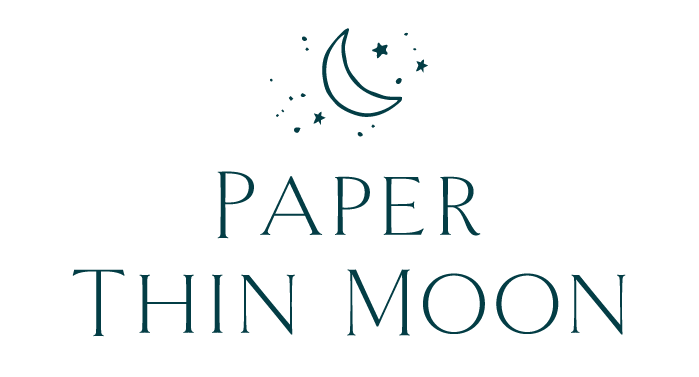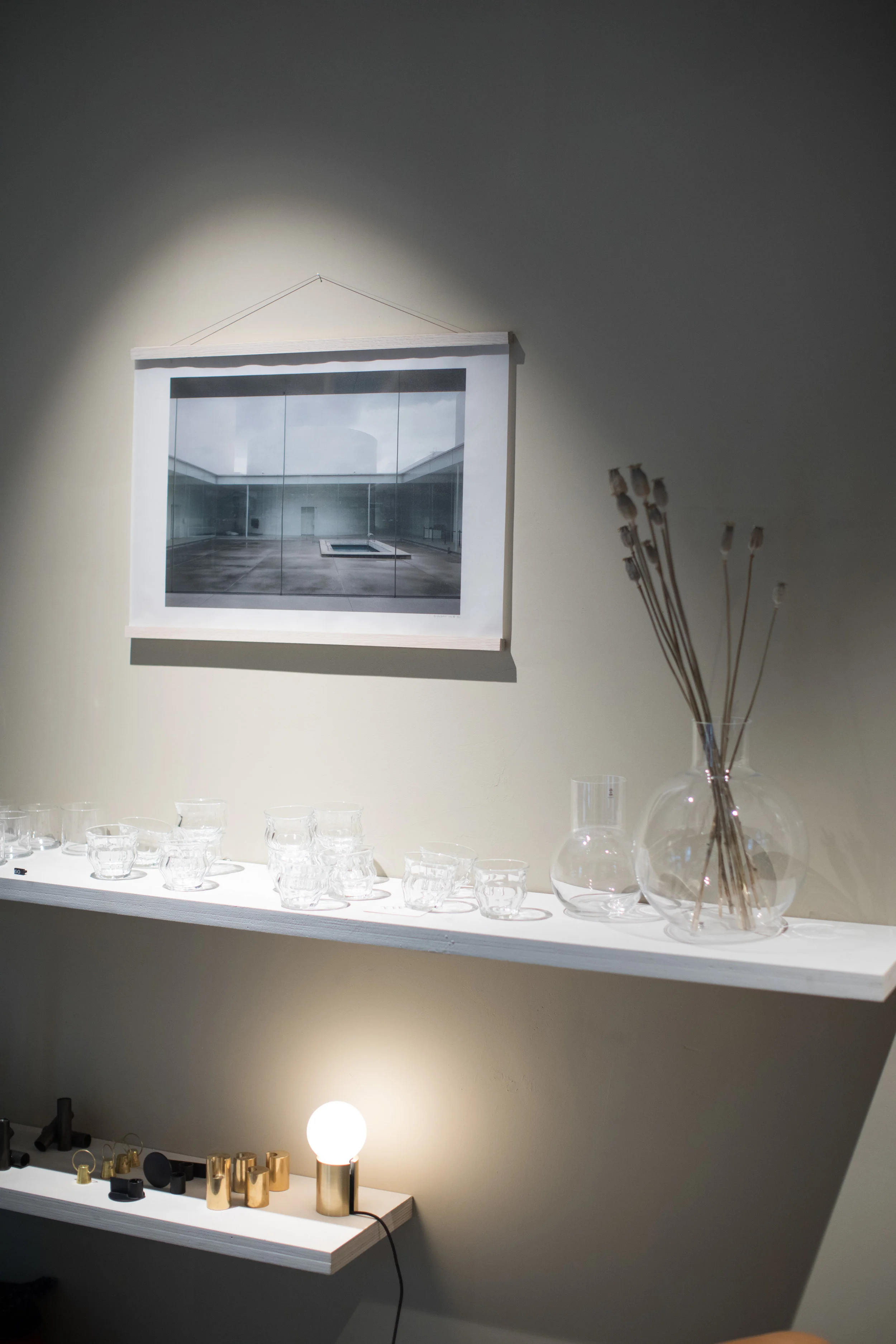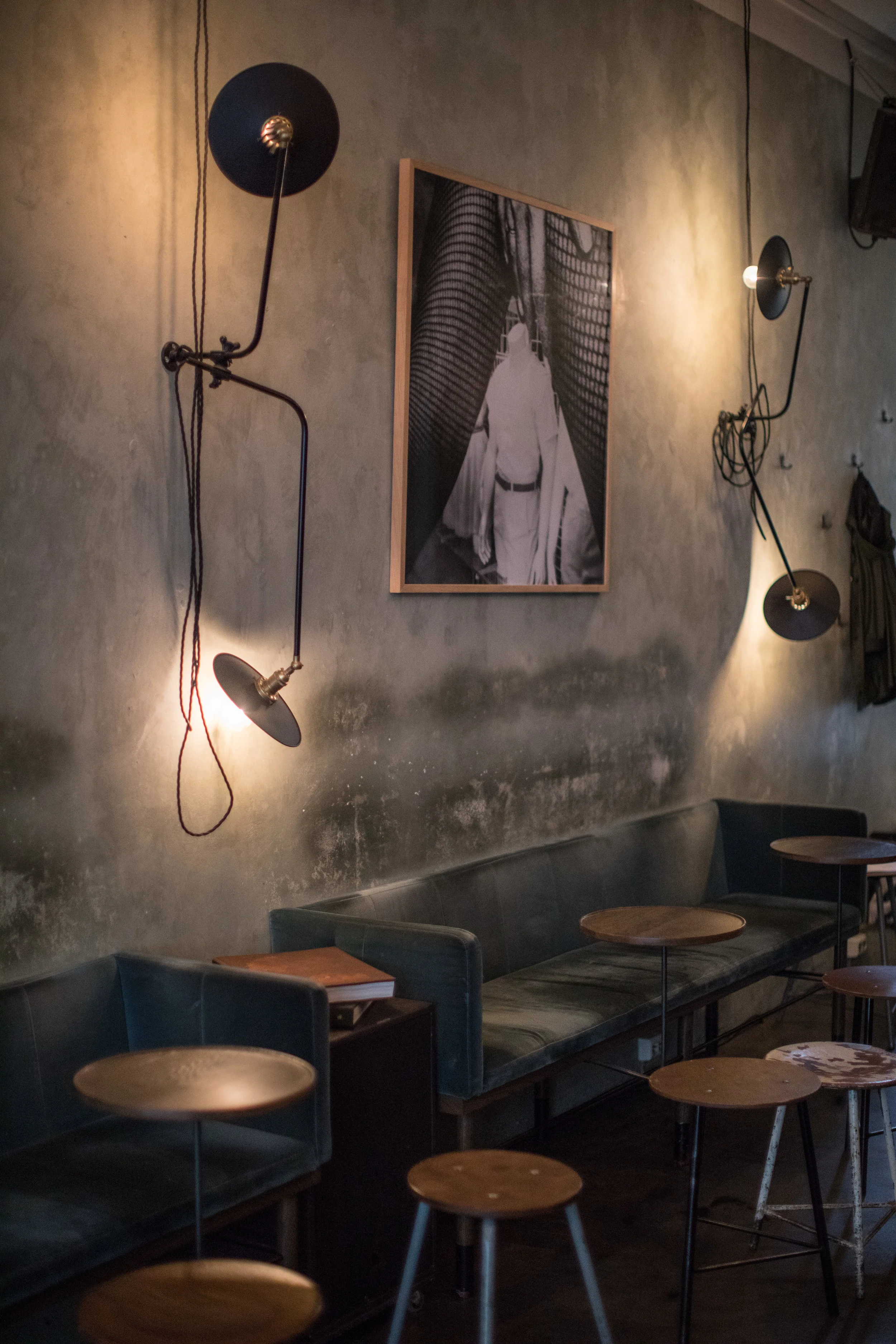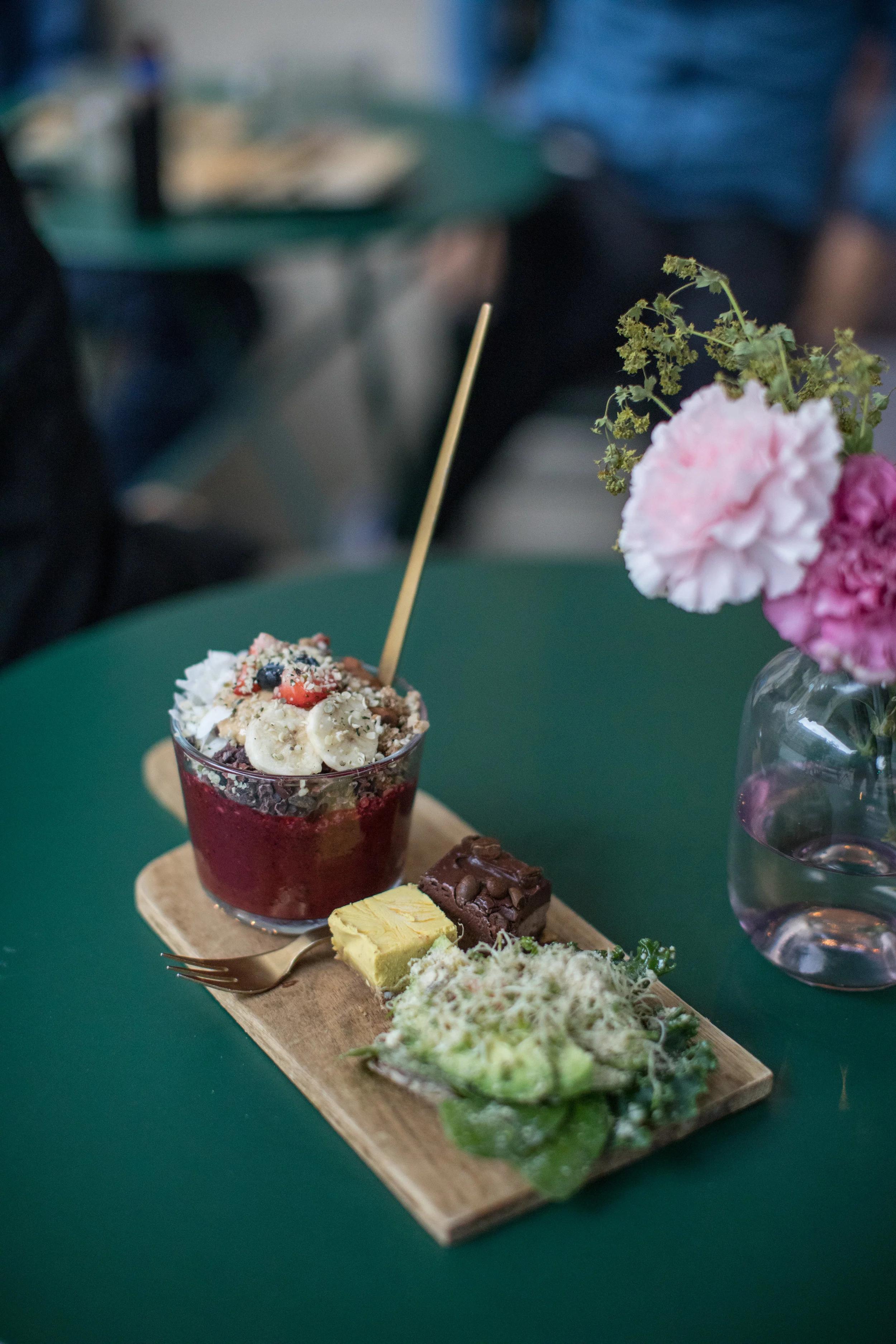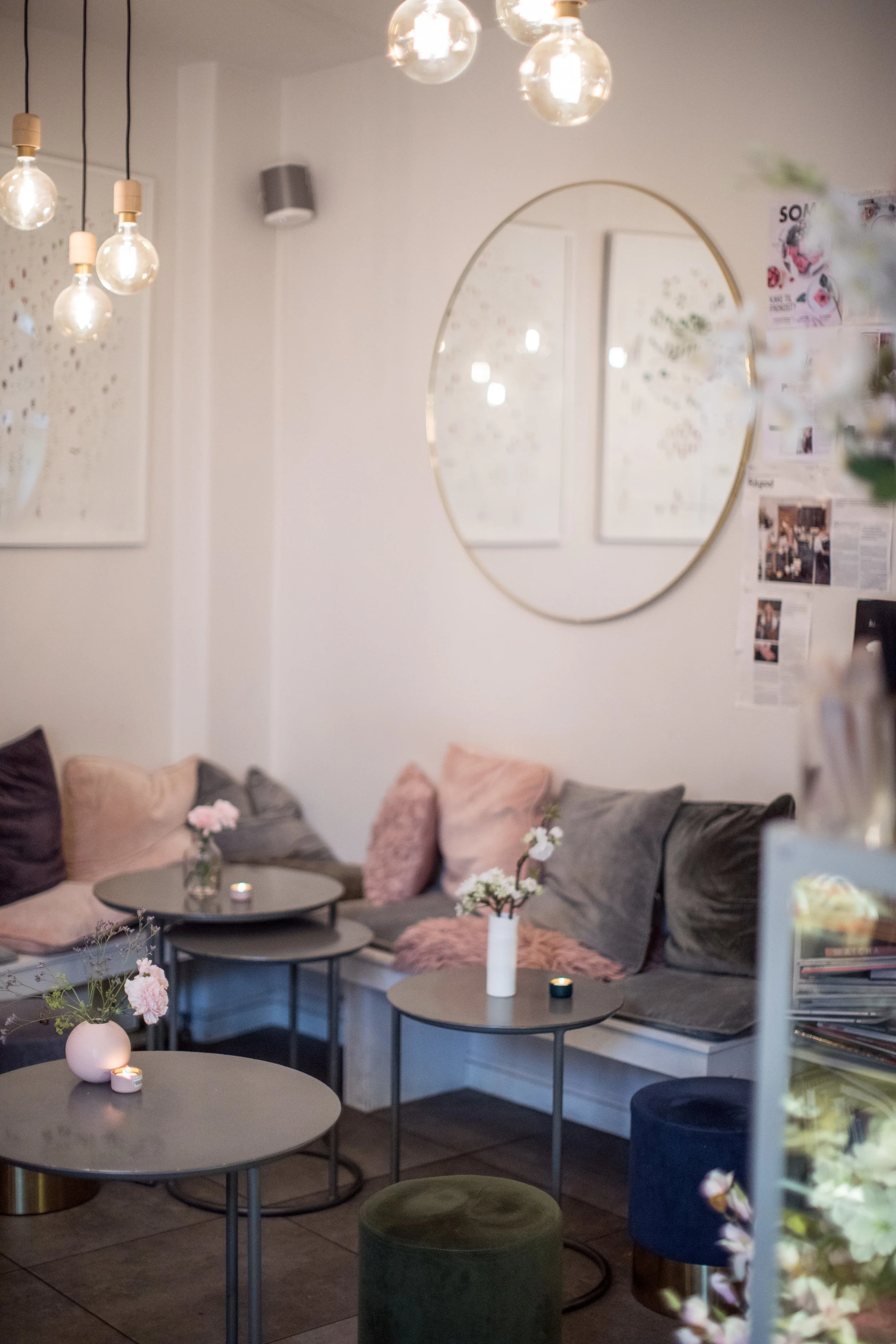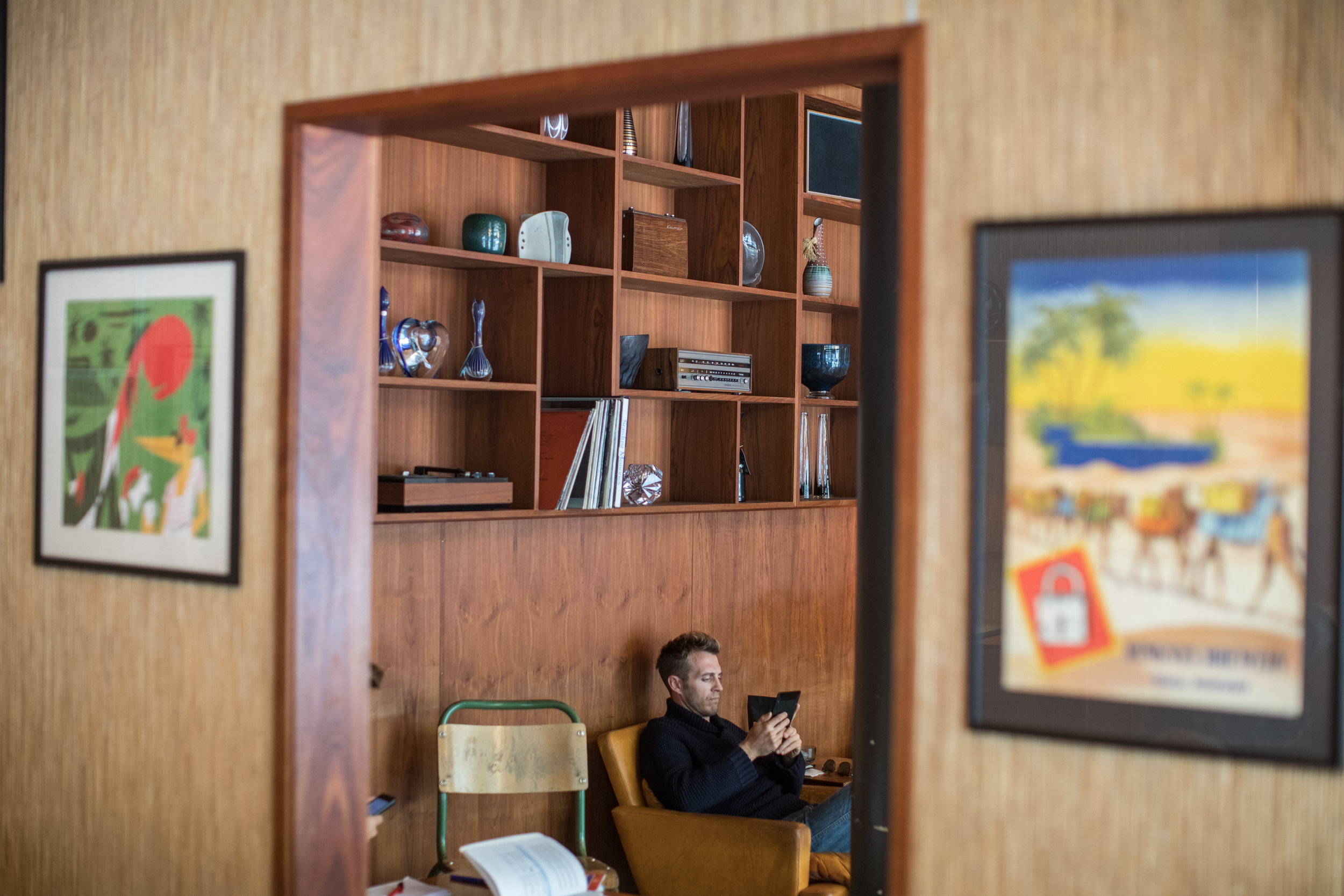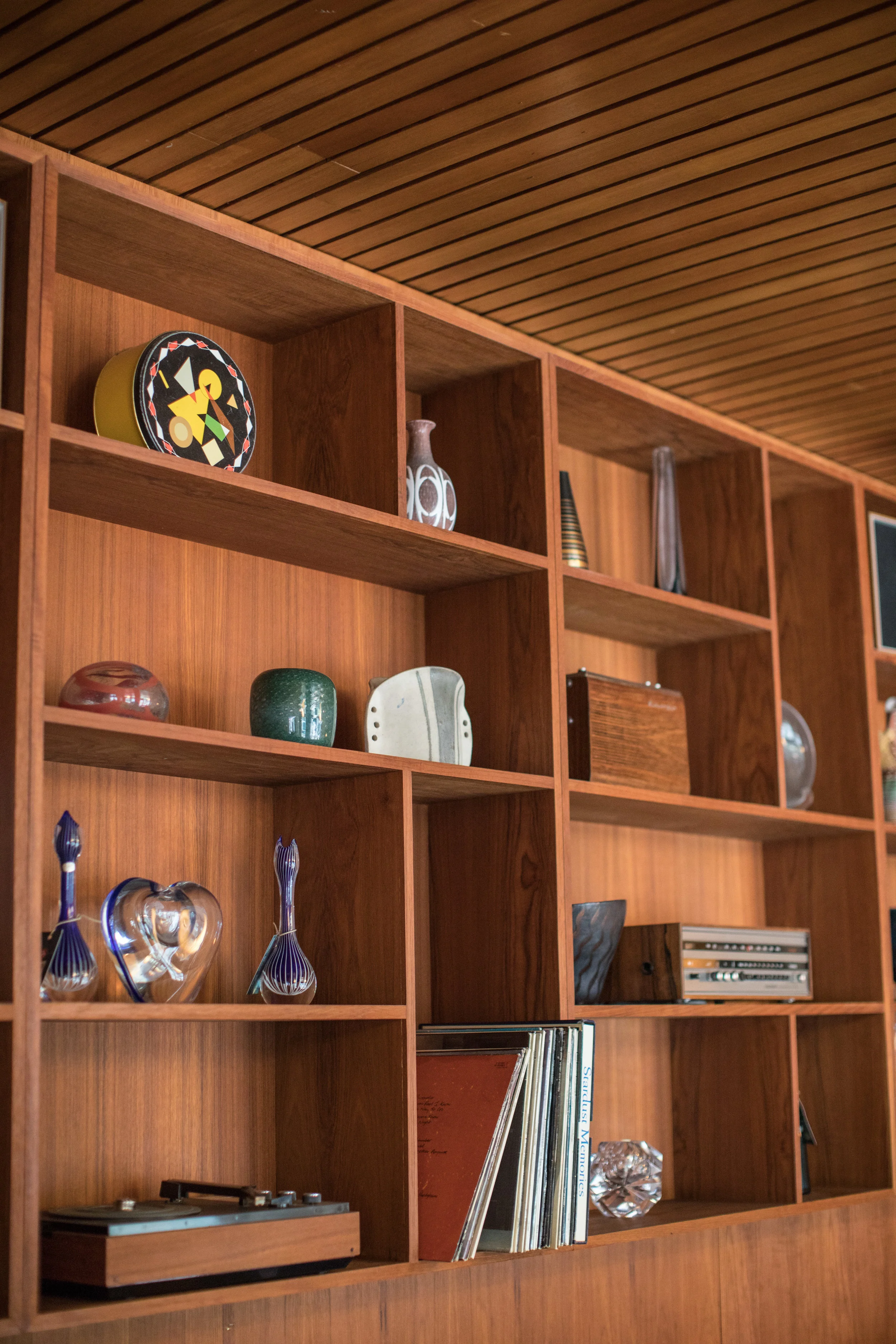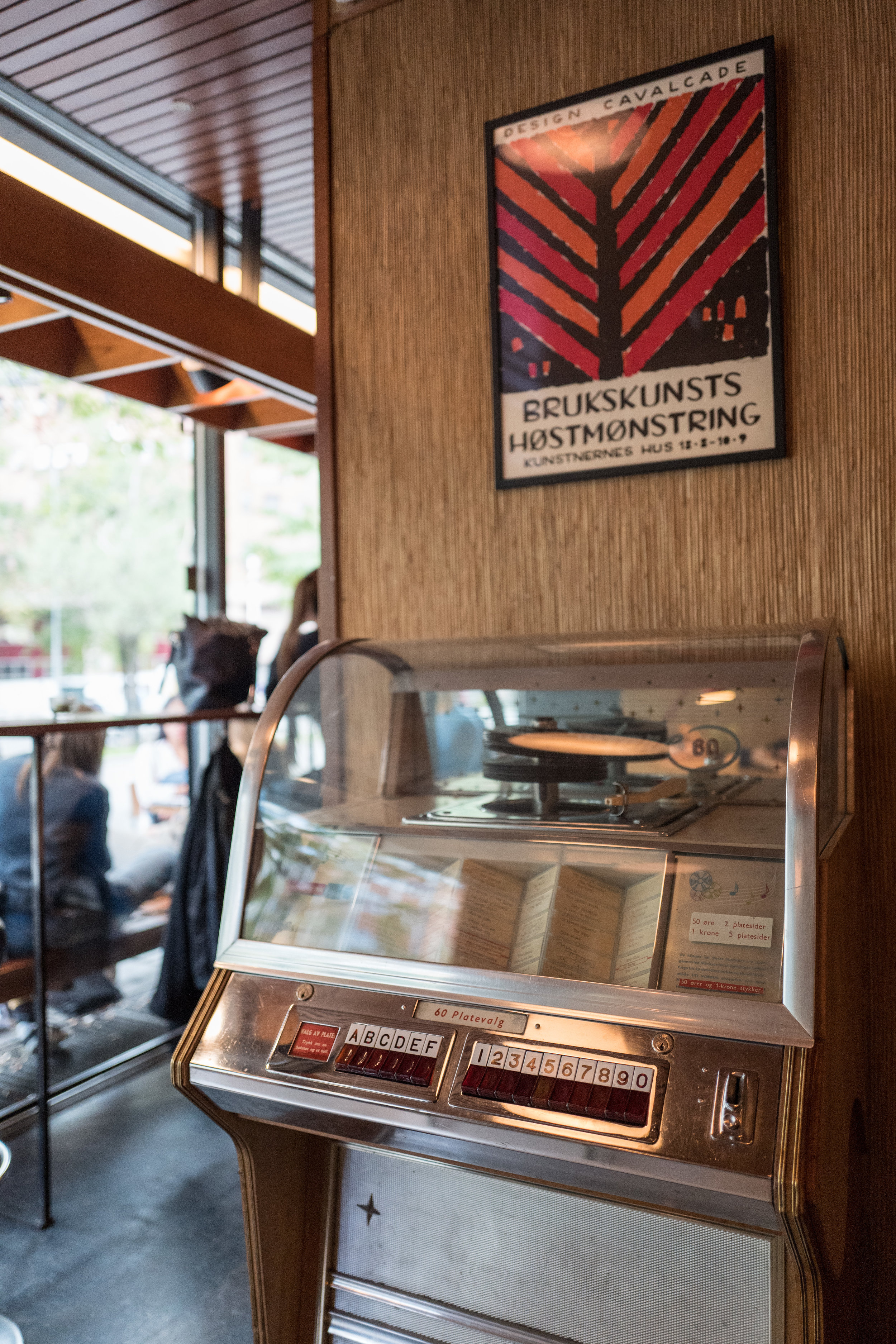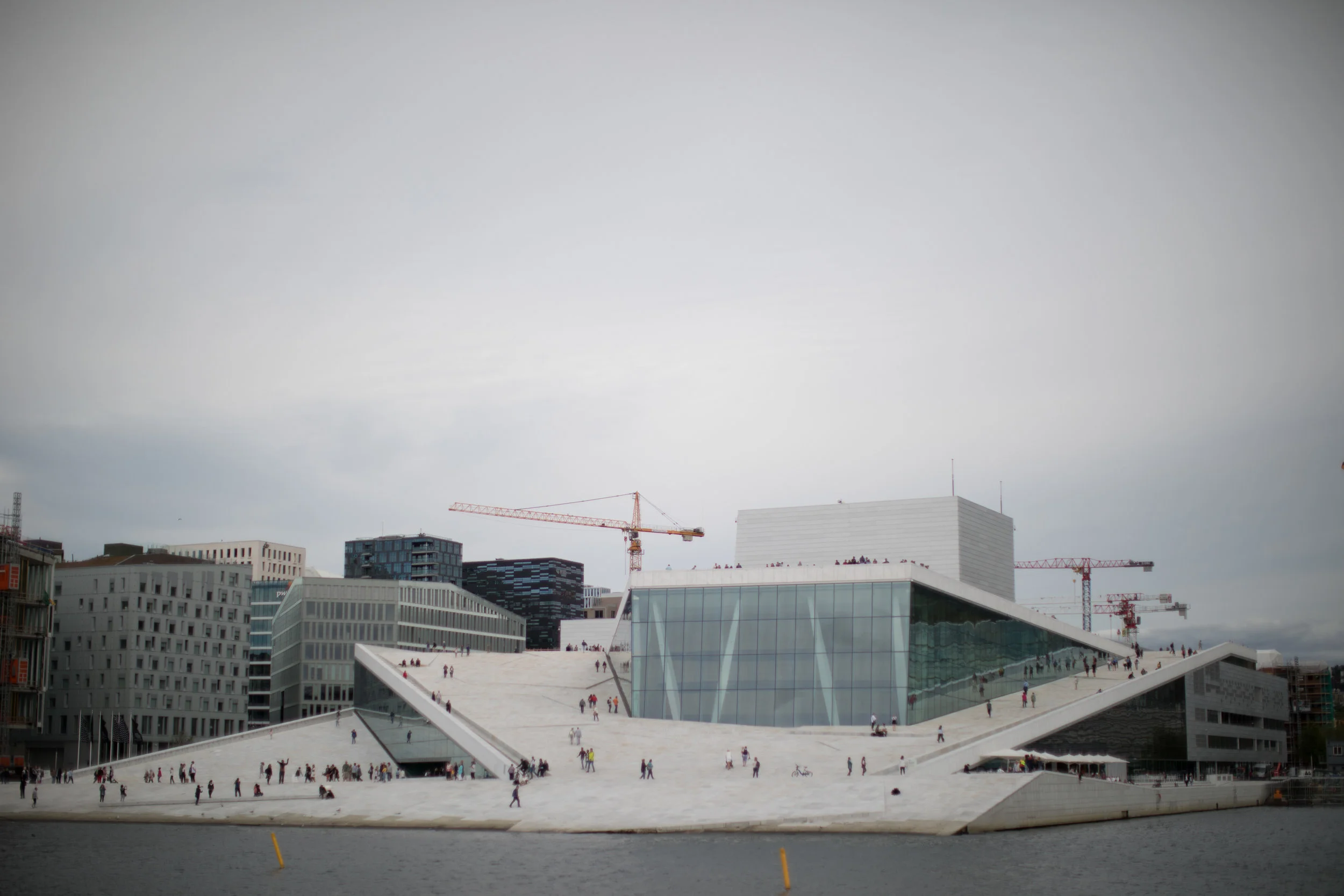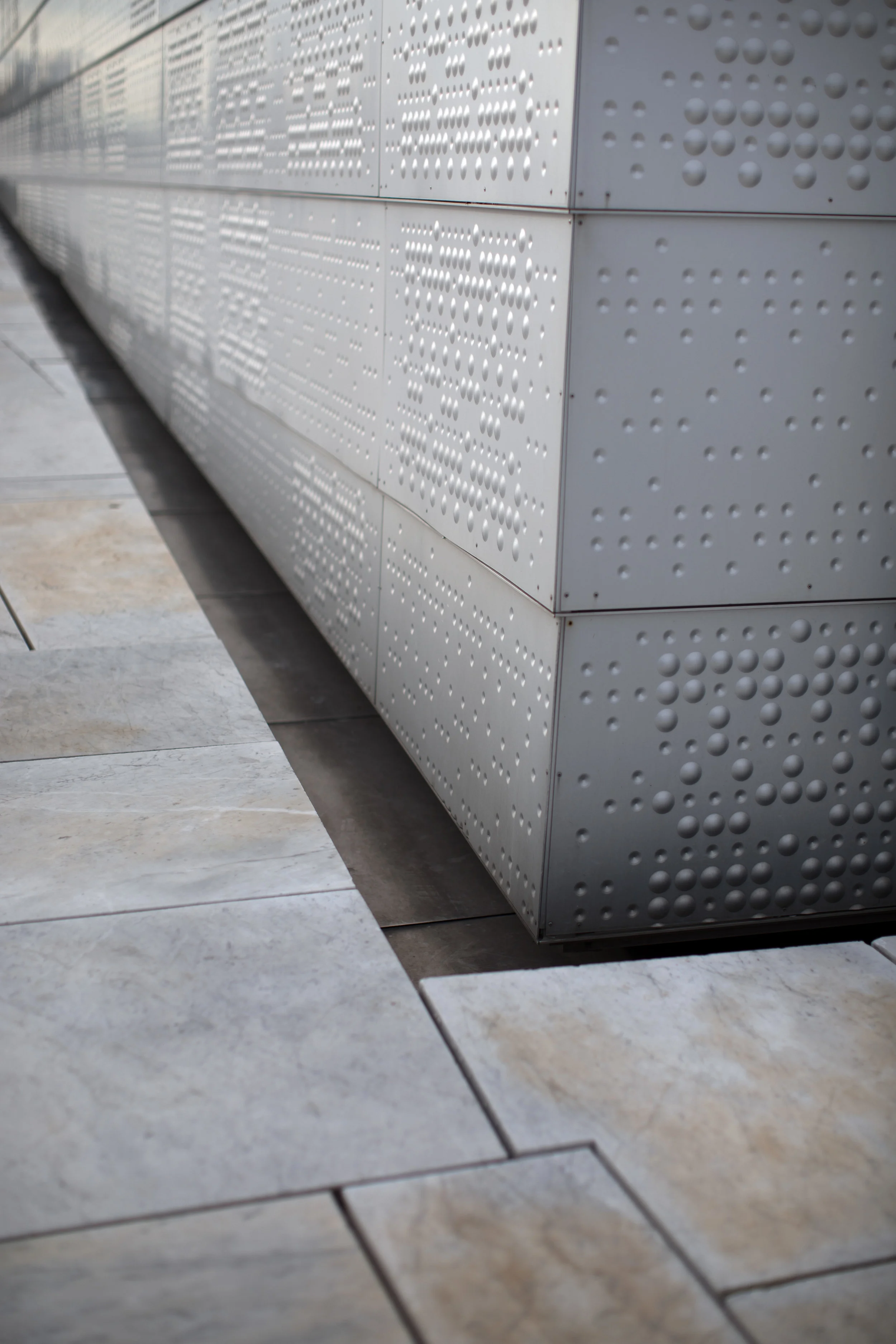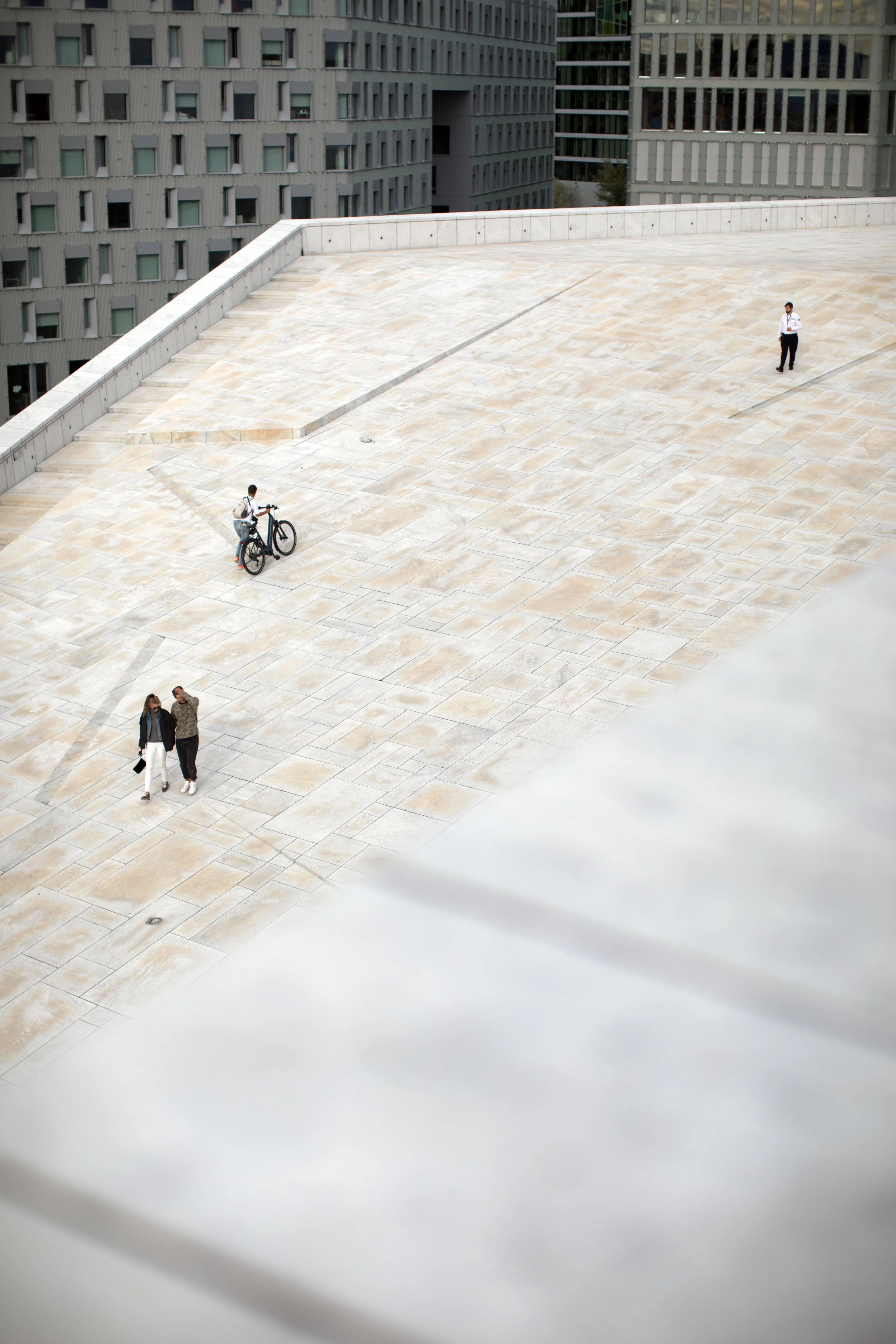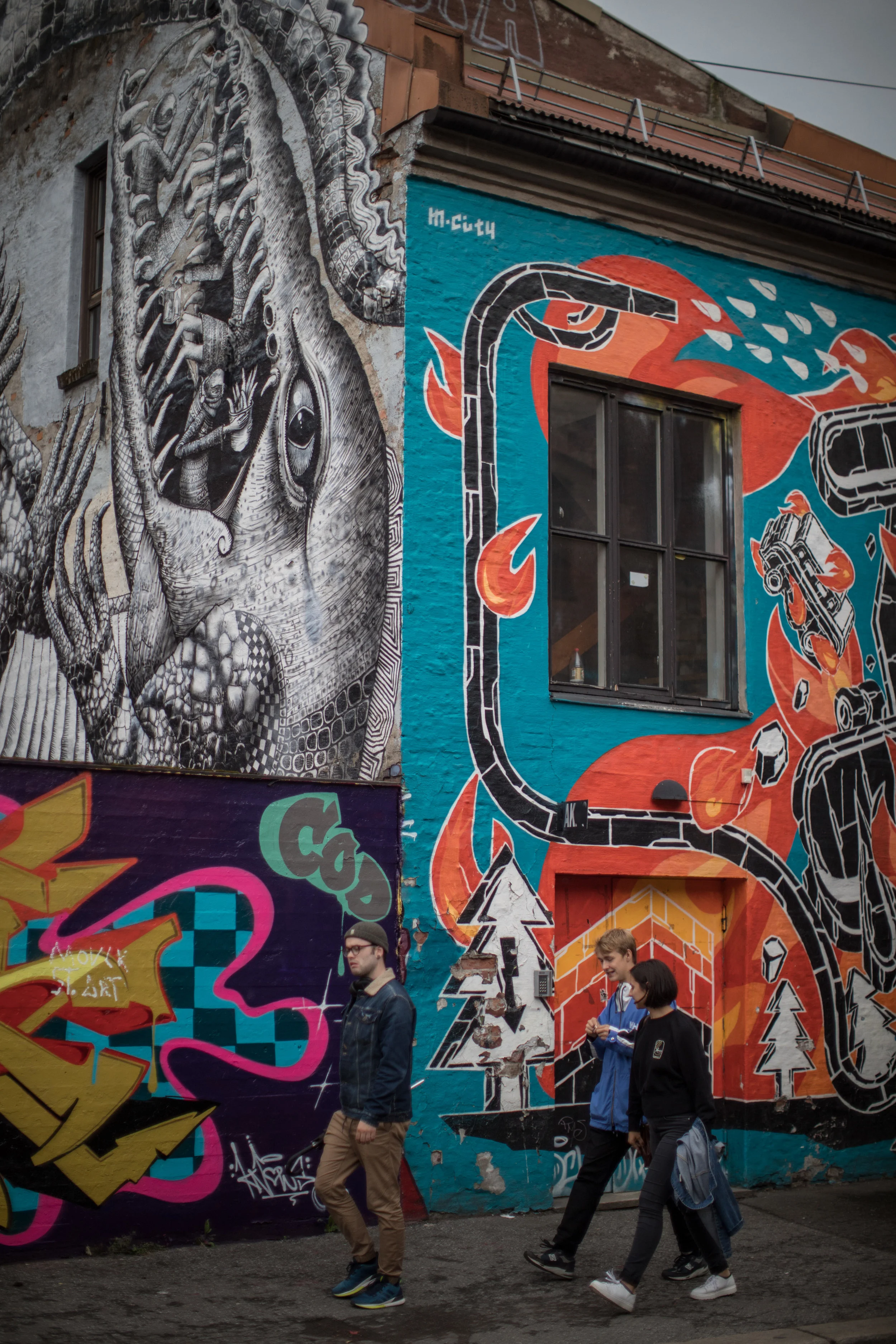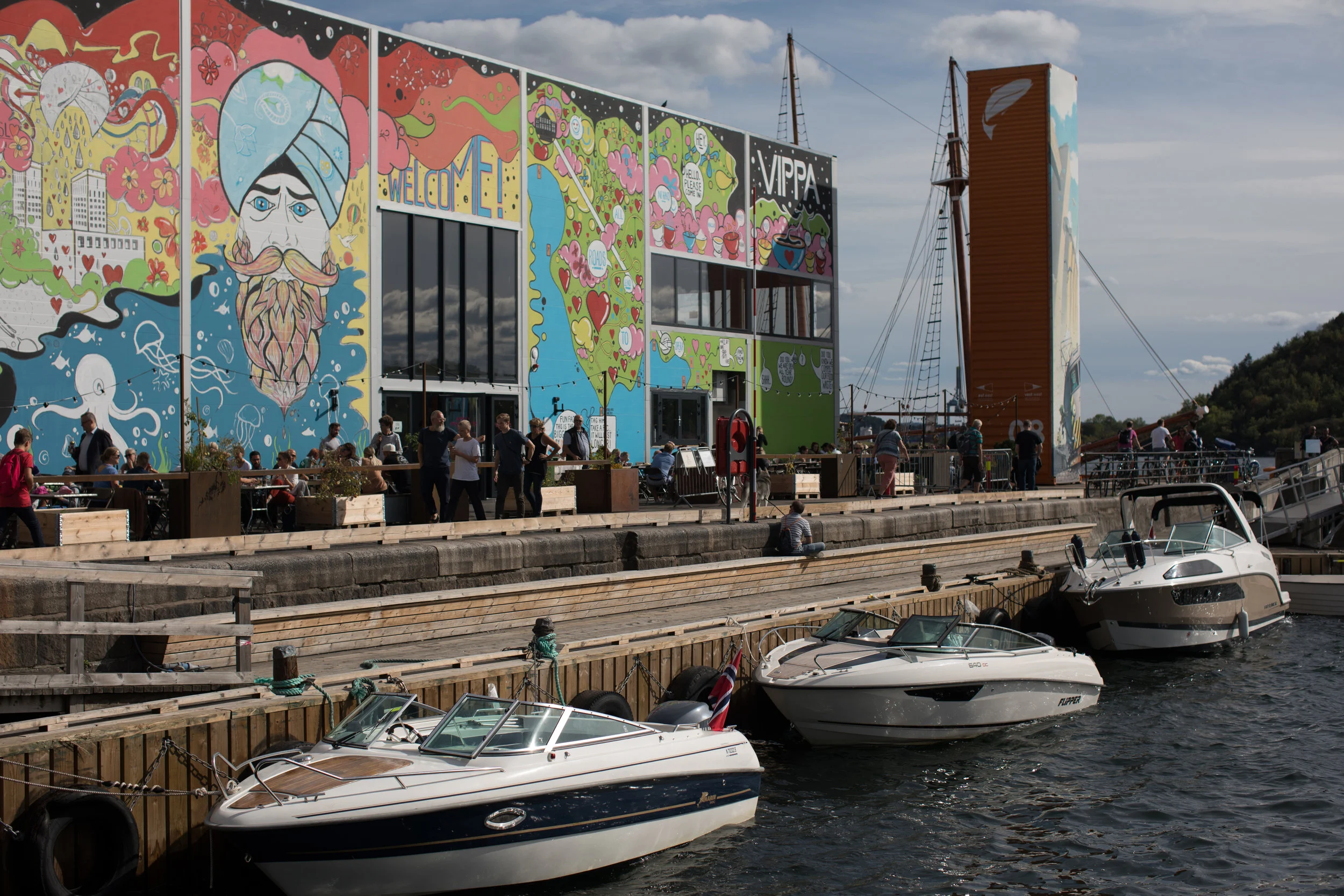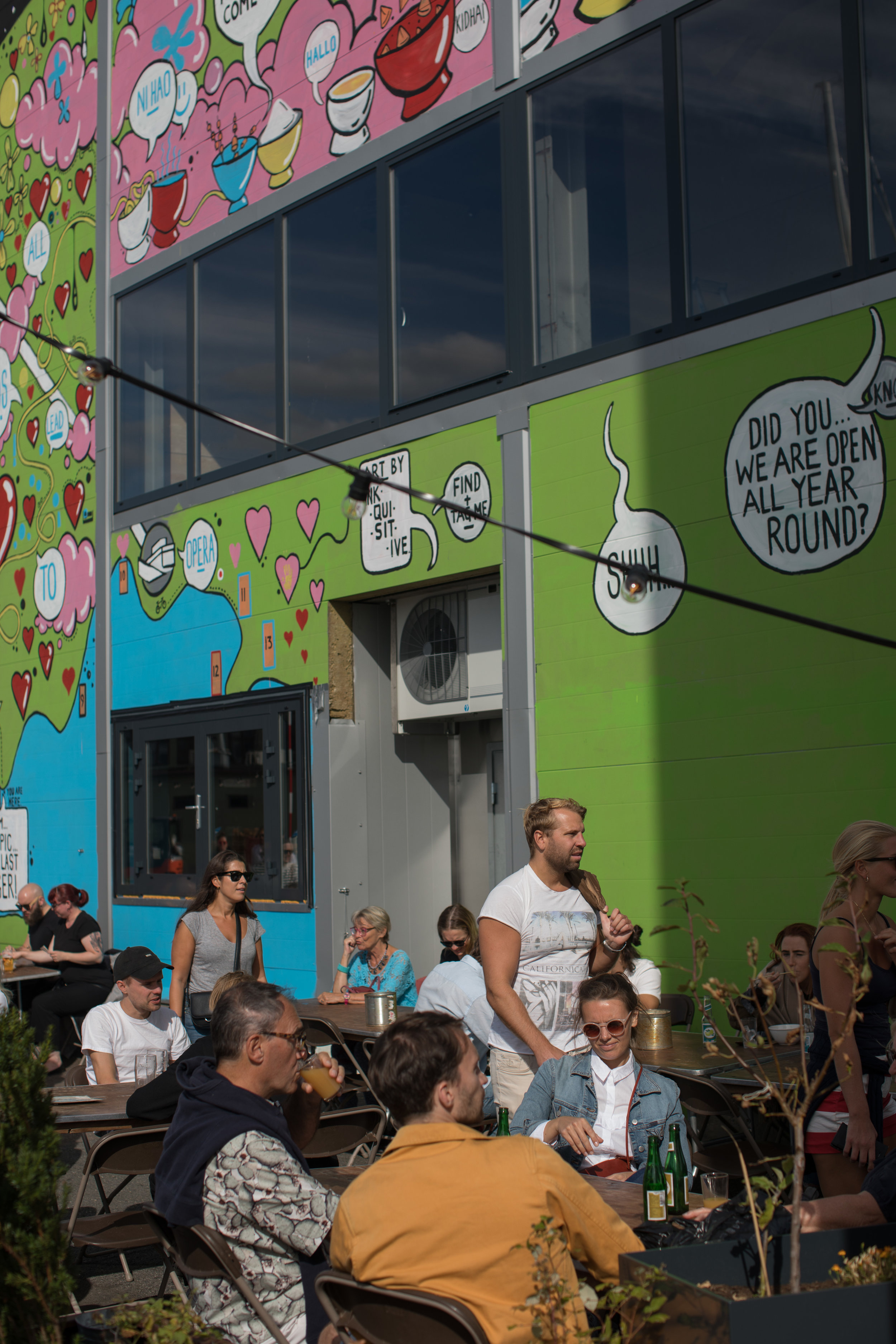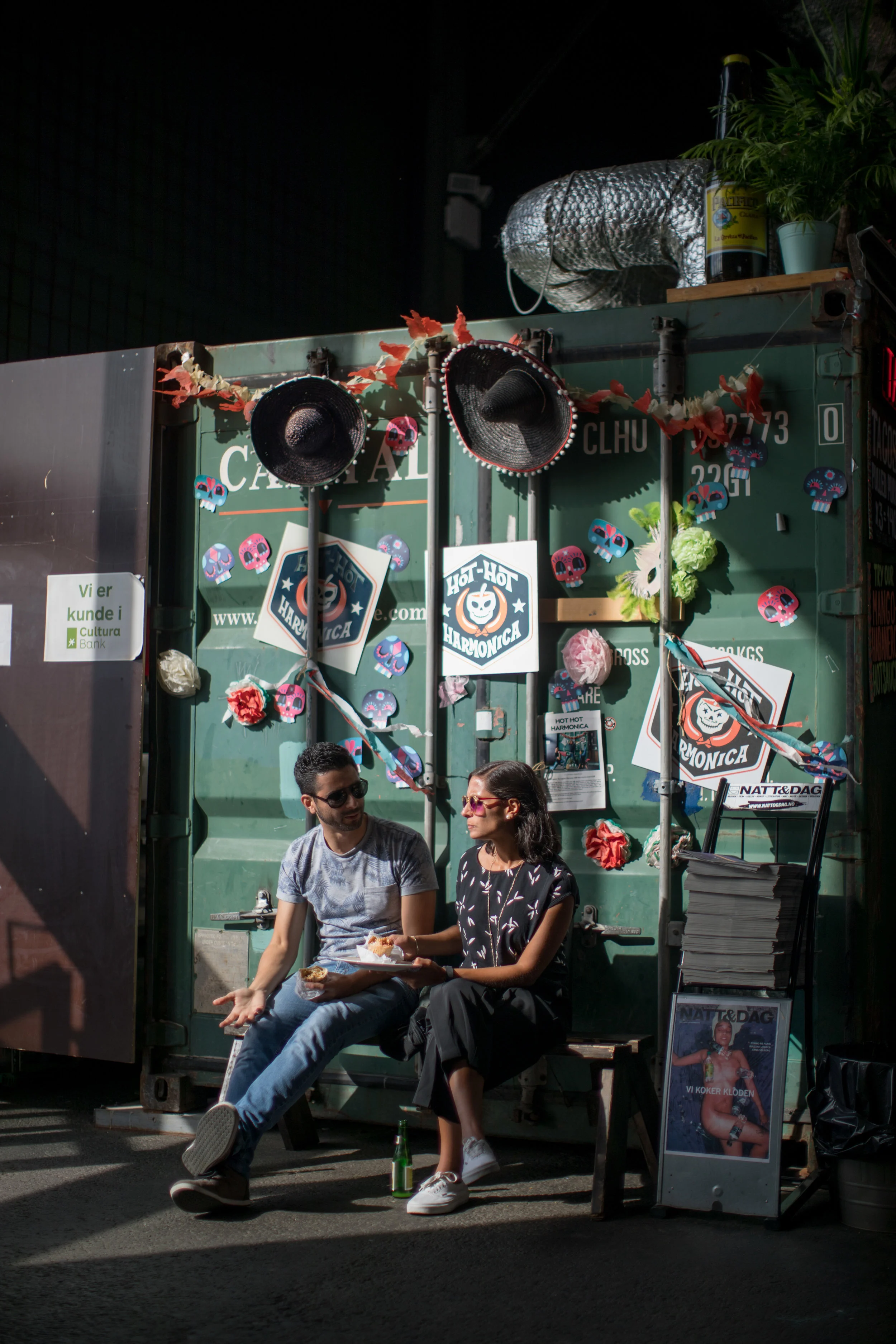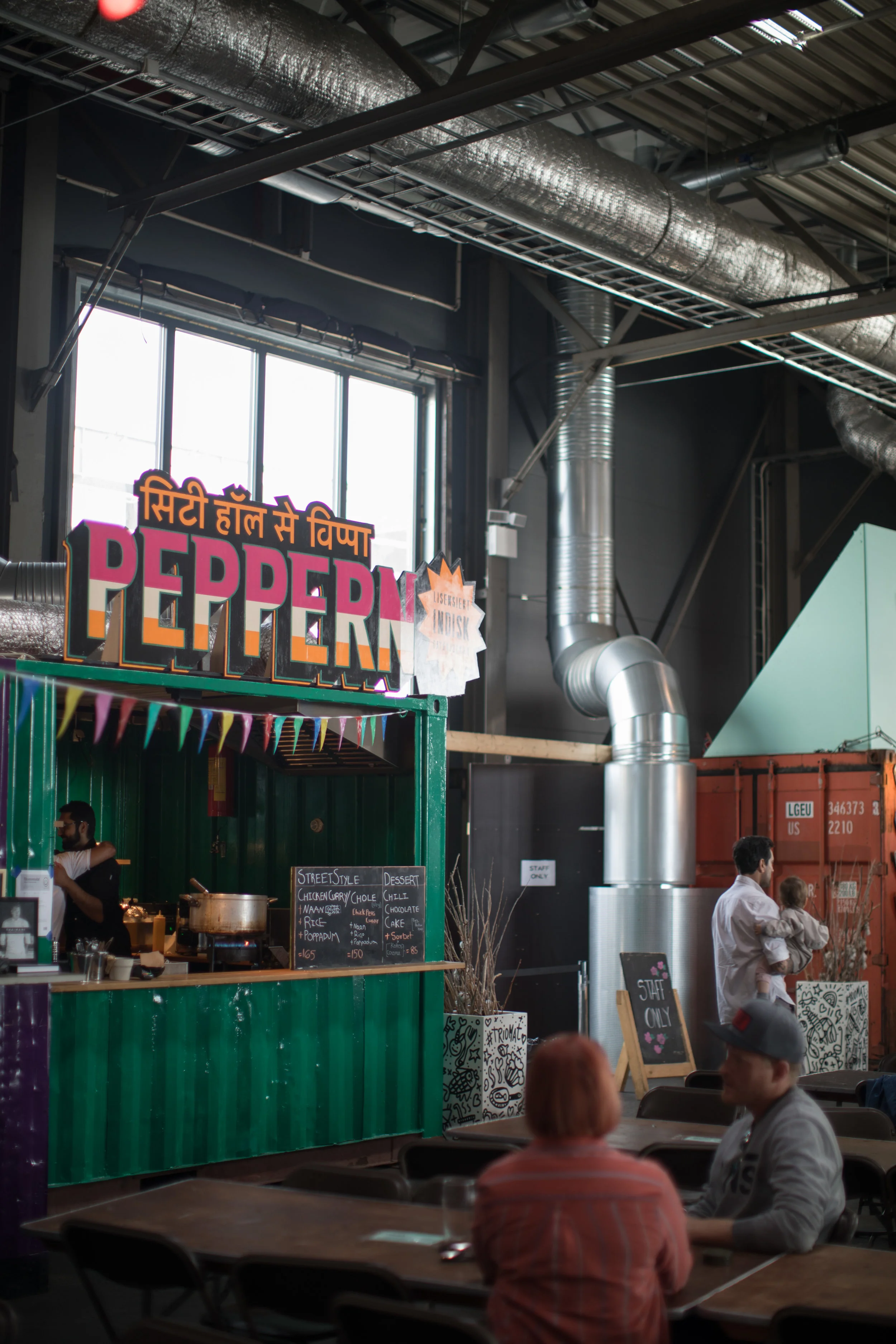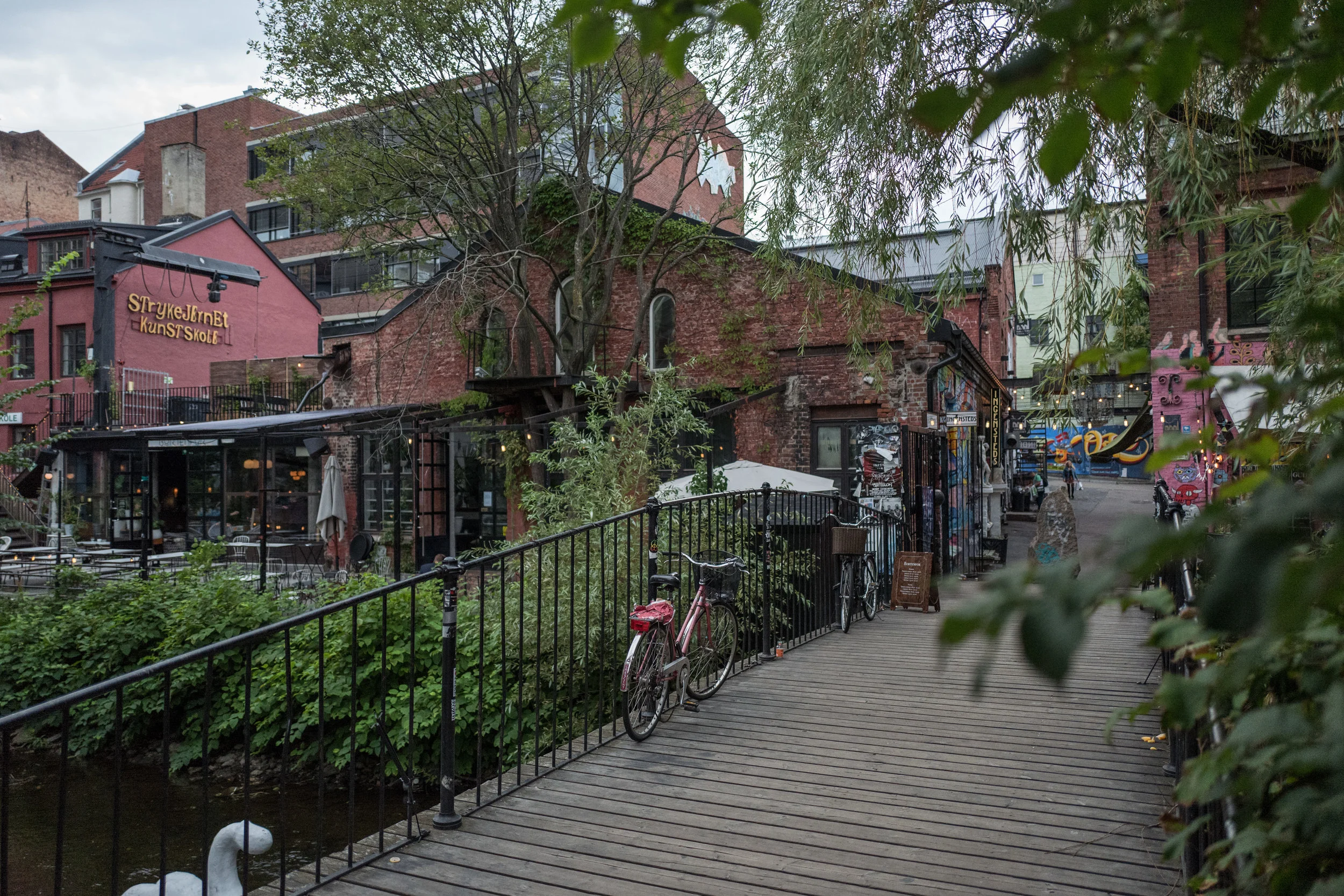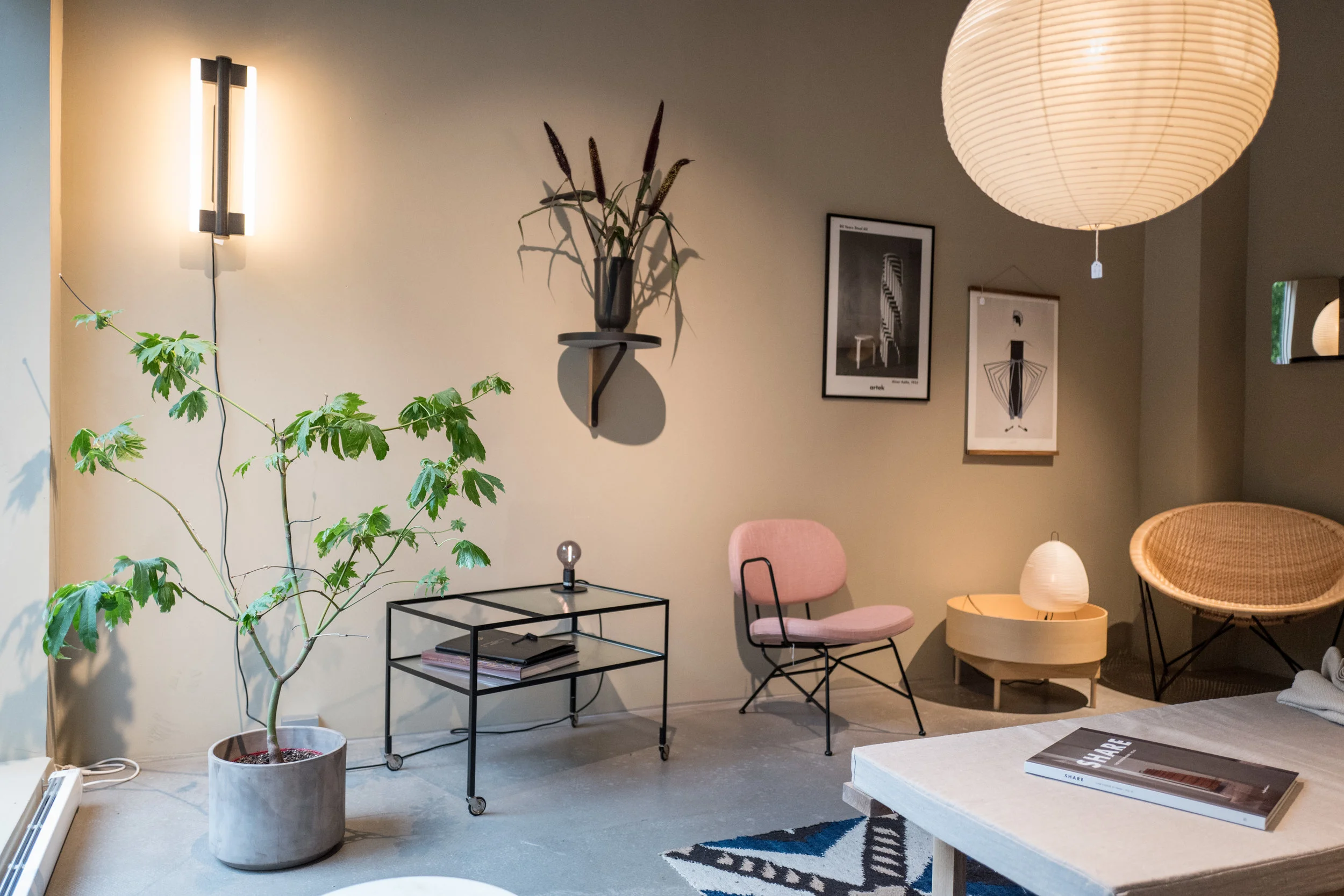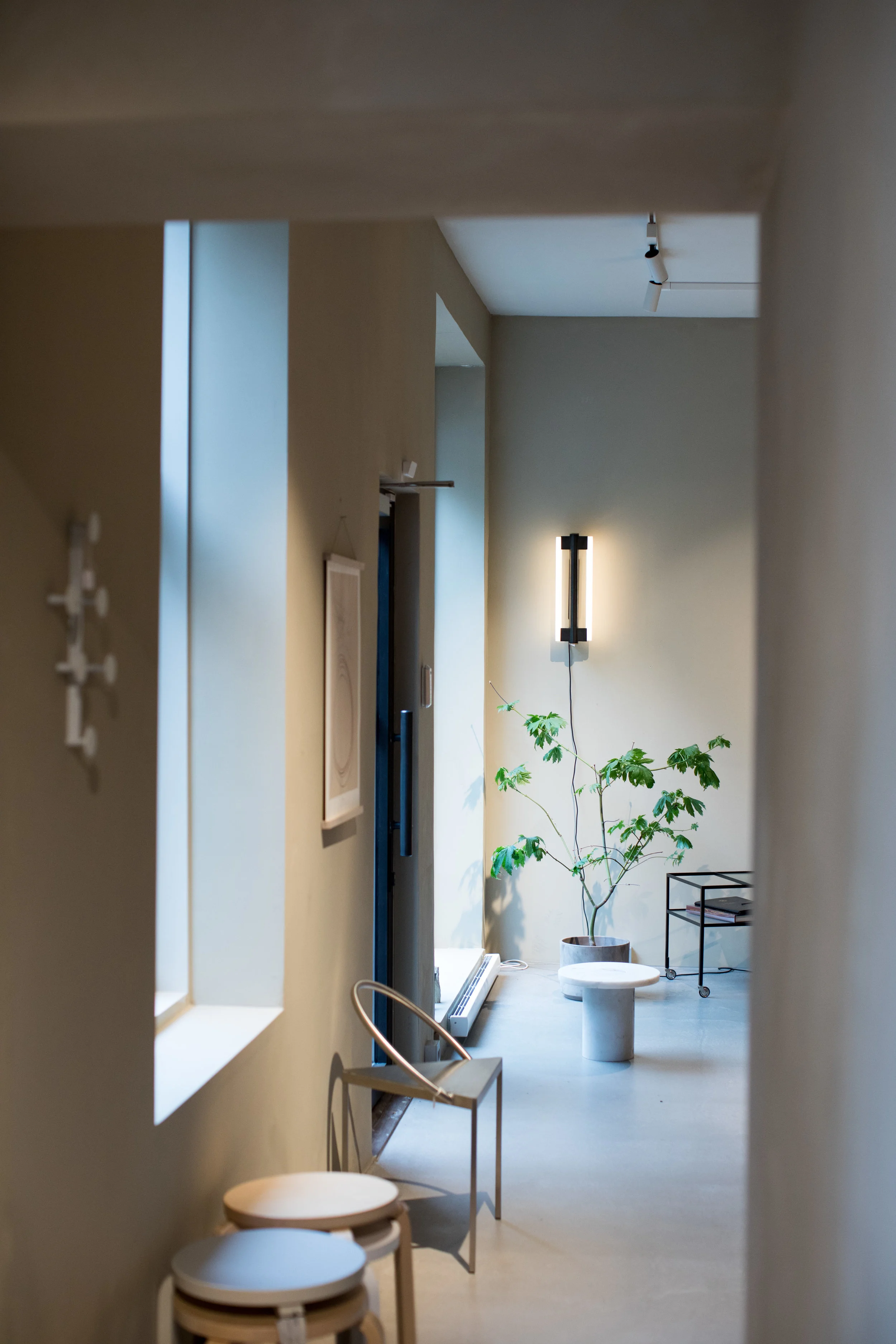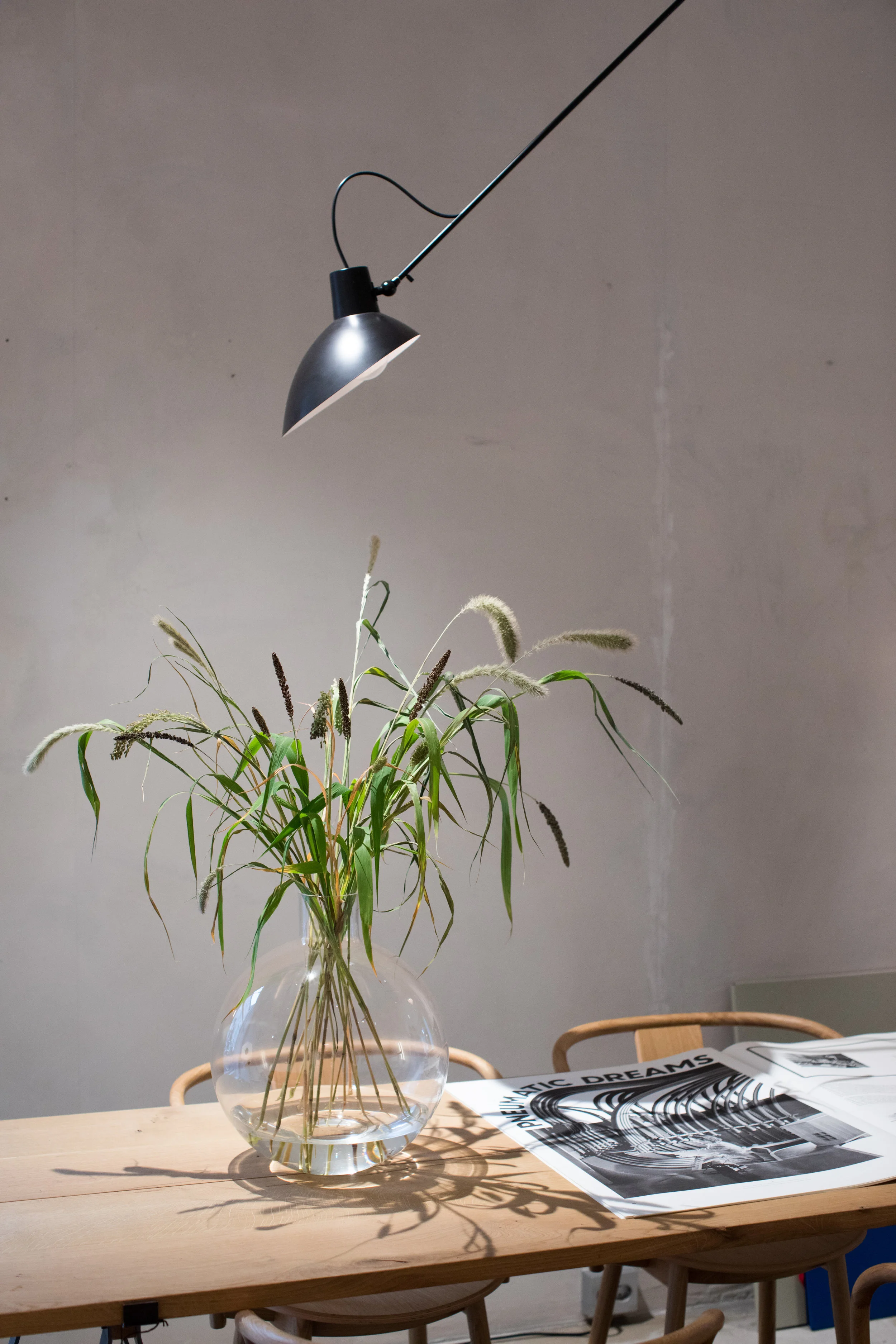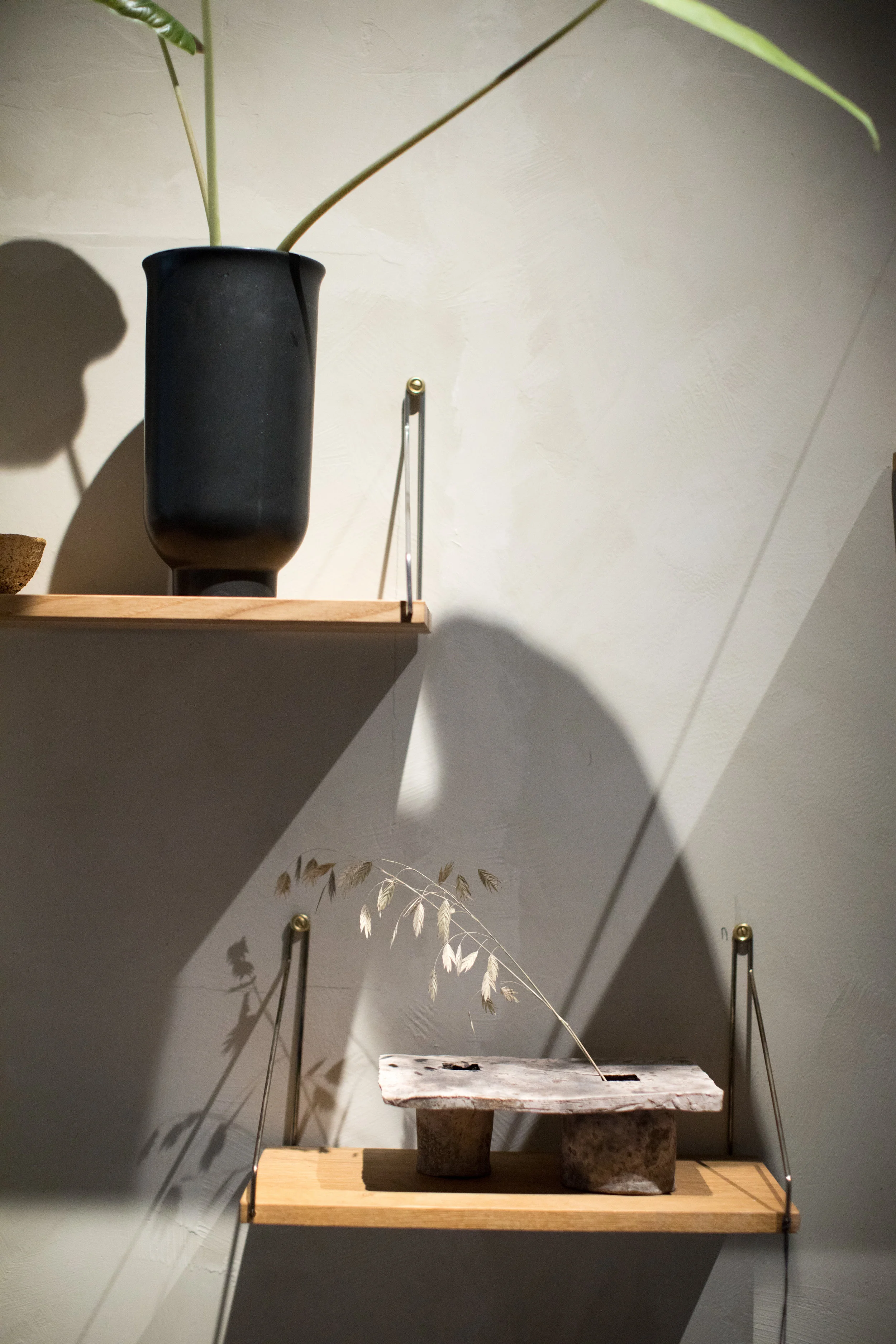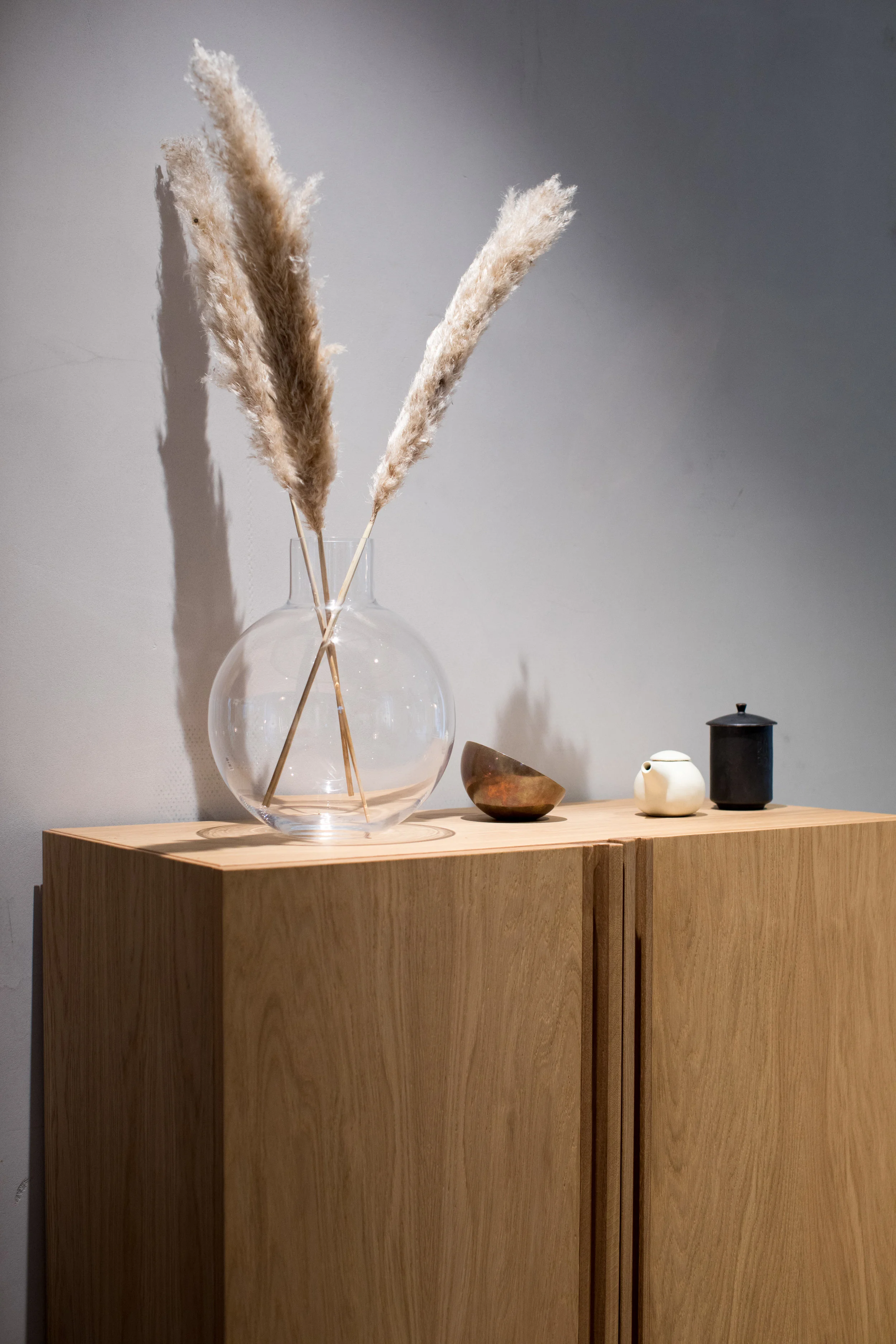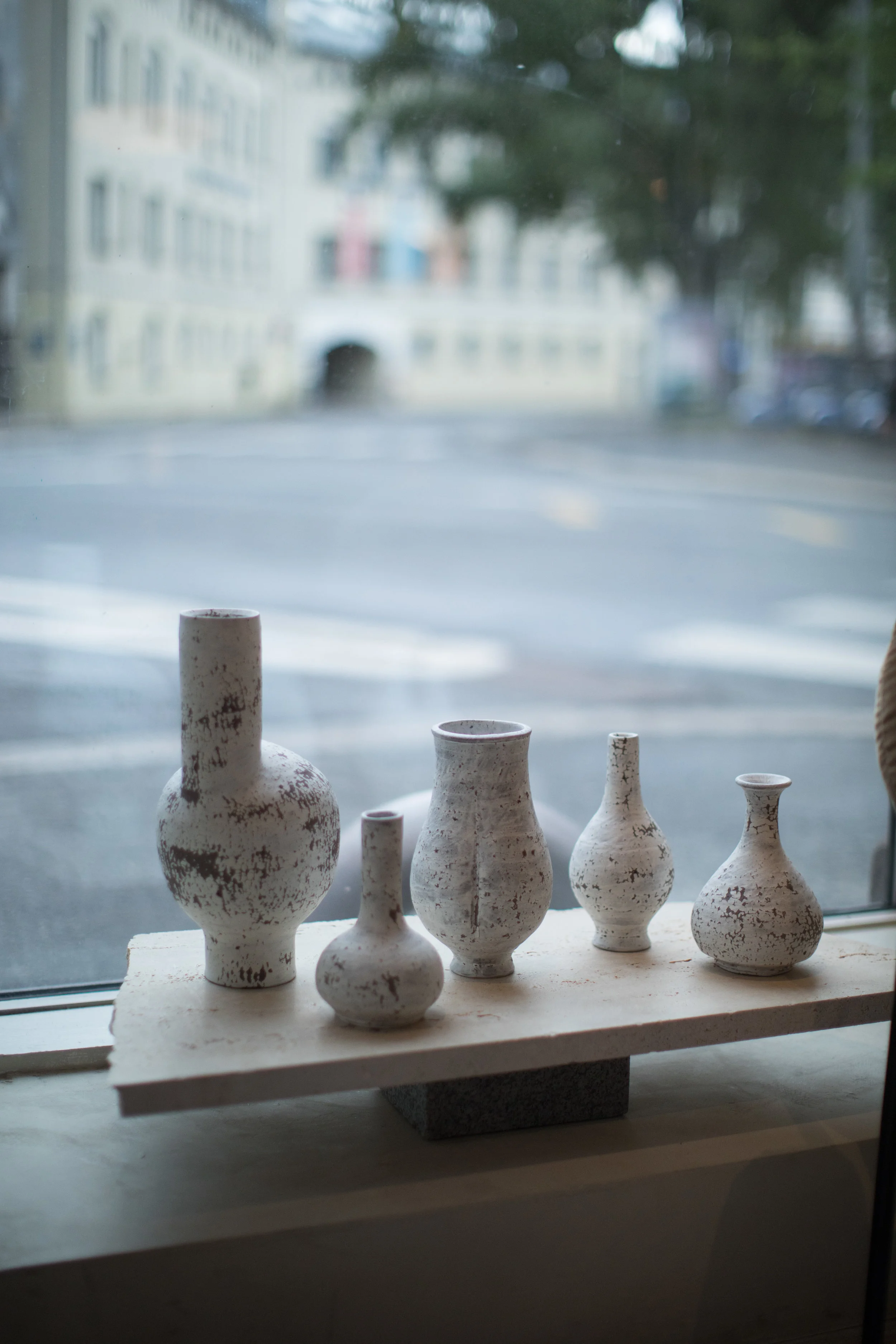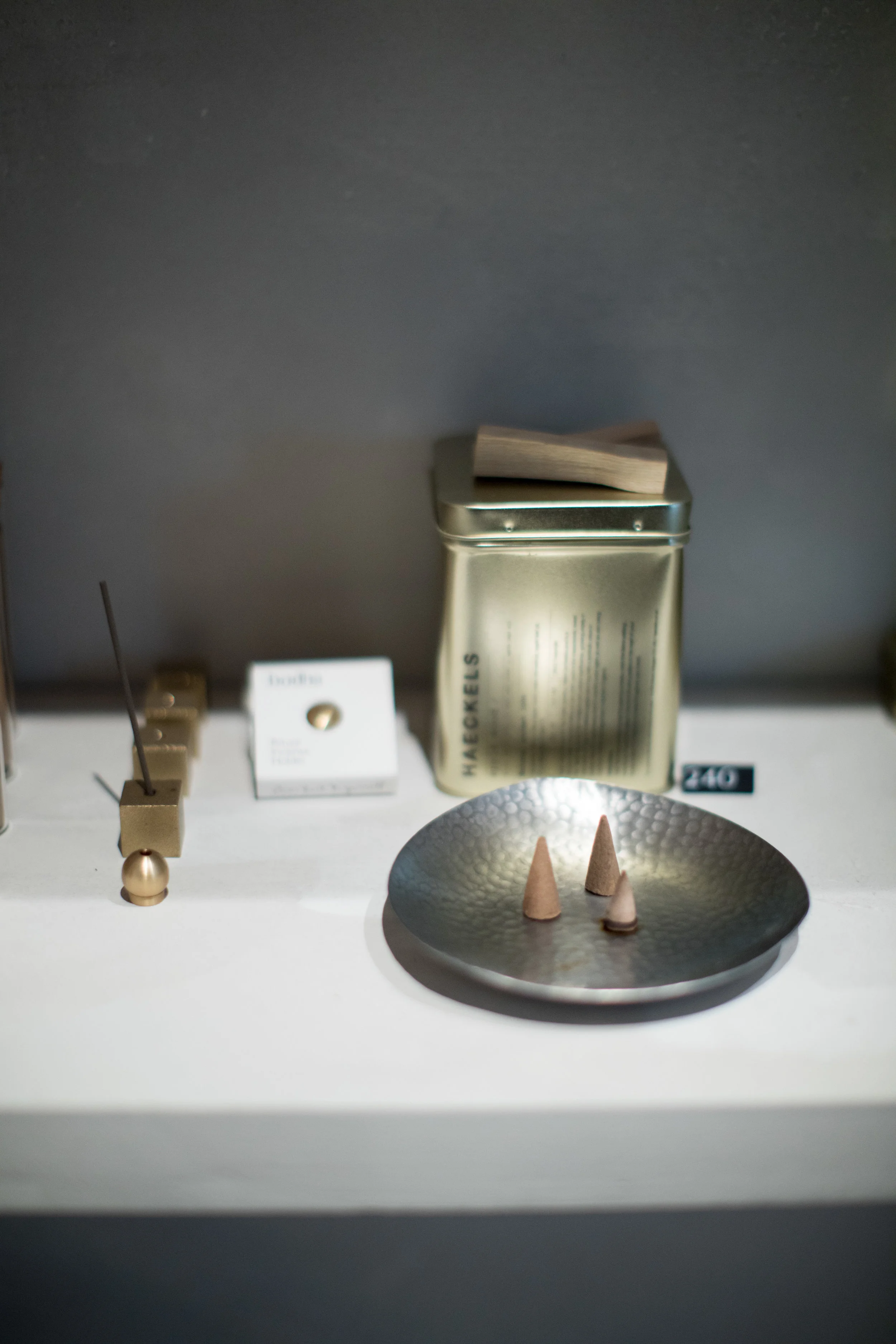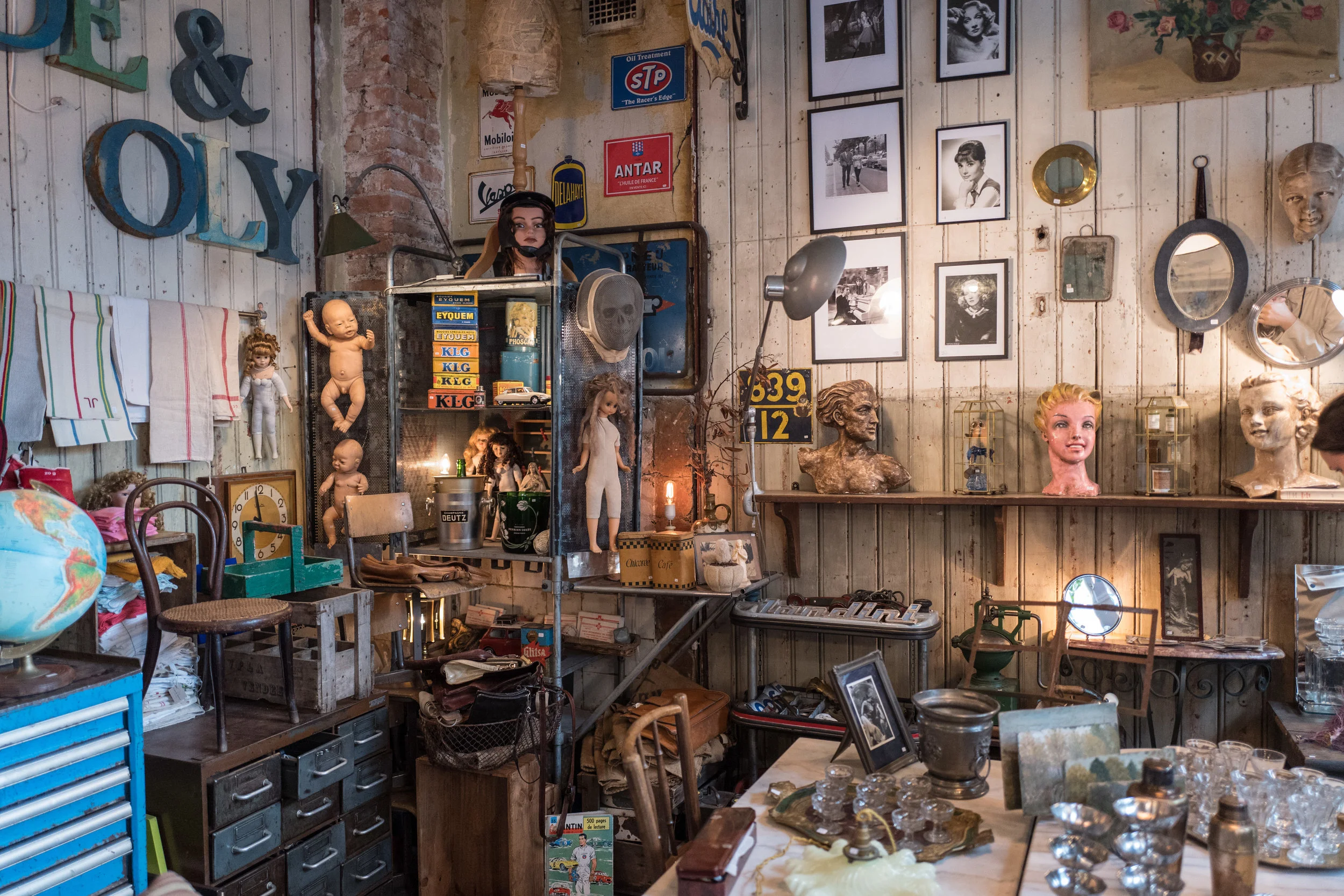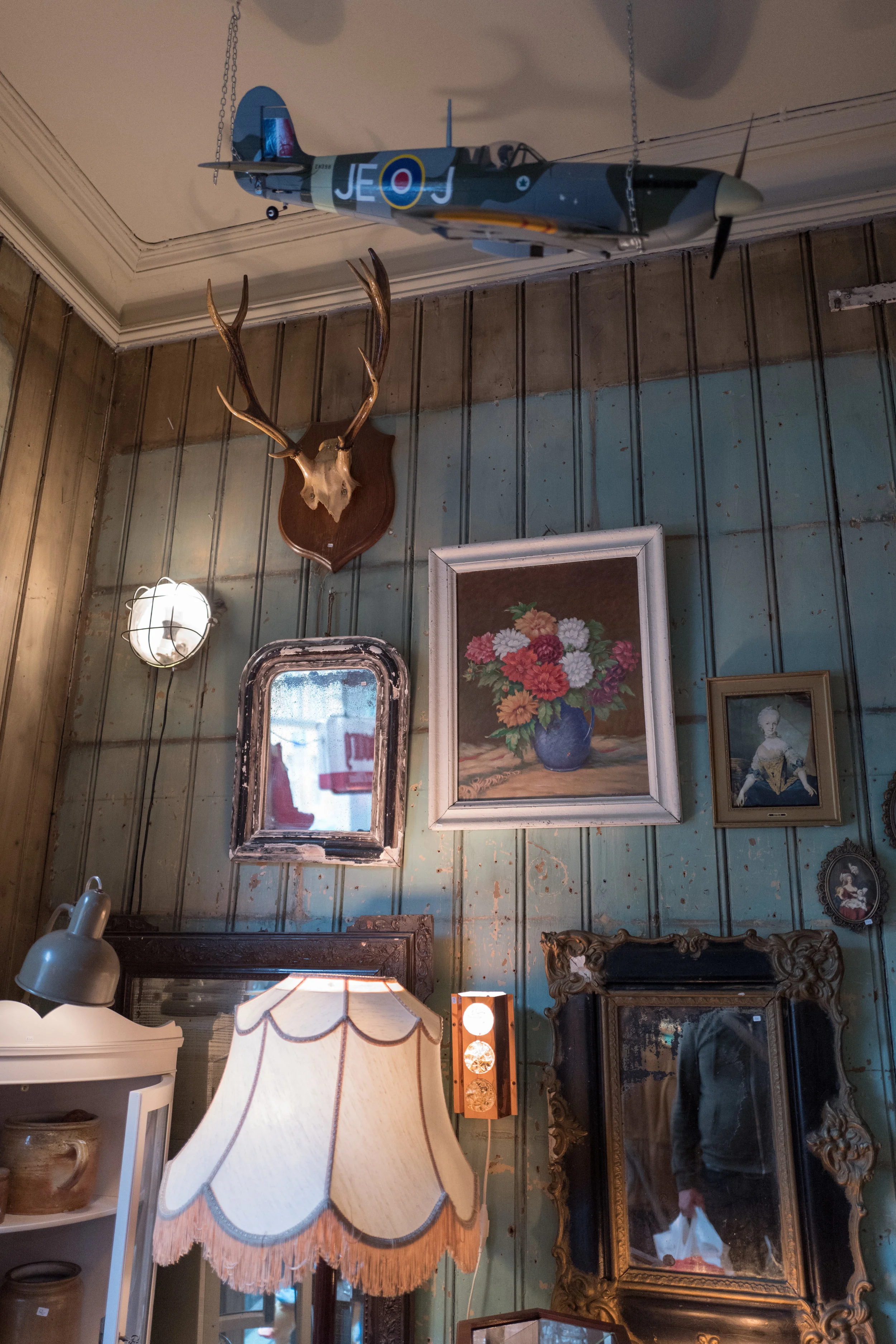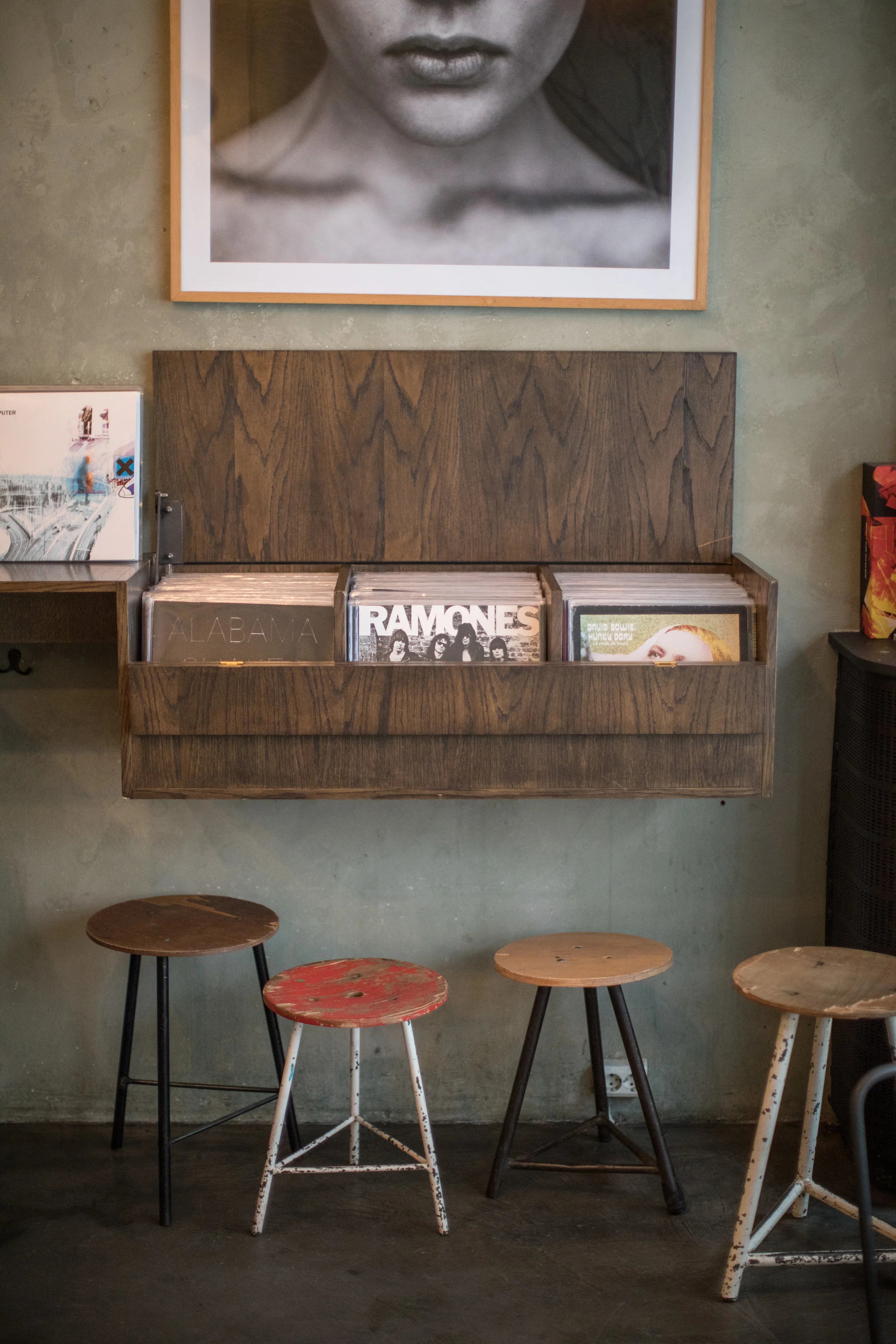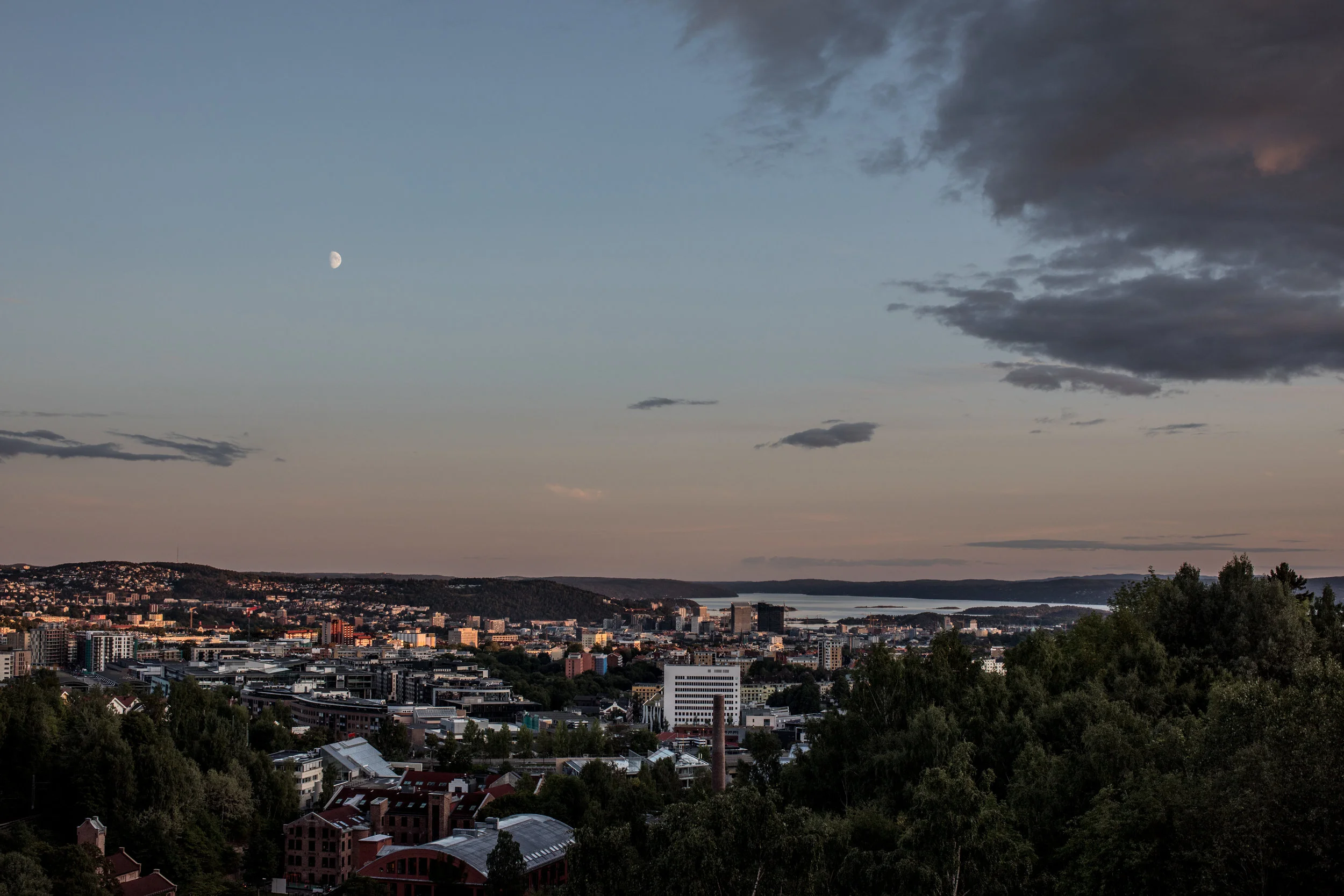Shopping & Eating in Oslo
I've never been very good at early morning starts, but I was up with the lark (or rather the seagulls) in excited anticipation of our morning arrival into Oslo. We'd taken the overnight ferry from Copenhagen as part of a four week road trip to visit my brother, who moved to the Norwegian capital a couple of years ago. Along the way we had taken in whistle-stop tours of some of northern Europe’s lovliest towns and cities, and planned to take in a few more on the way home. As the early morning sun filled our cabin, I peered, bleary-eyed, out of the window and caught sight of some of Norway's traditional brightly painted houses, nestled like tiny dolls’ houses along the fjord archipelago. Before long, we were showered and dressed and up on deck, ready to capture our first glimpse of the city rising up into the mountains through the morning mist.
We took the short drive to my brother’s apartment in Tåsen, a couple of miles north of the city centre, which would be our digs for the next ten days. We’d been greeted by rain clouds that deposited a steady stream of drizzle over the city for the entire day, so after lunch we decide to take a trip a to the nearby National museum of science and technology – mindful as we were to keep the kids contented and occupied. As it turns out, the Teknisk Museum is a paradise not only for curious kids. With dozens of interactive installations, musical machines and instruments, and a huge transport exhibition, we were all kept happy and busy until teatime.
The next morning, we nipped into Oslo Raw on Adamstuen Torg for a coffee, but after laying eyes on the pretty cakes, we decided to indulge in a few treats as well. As their name suggests, Oslo Raw specialises in raw, organic and vegan food. It all sounds very worthy and healthy (and it is) but it’s also yummy. The space is small and intimate, with a relaxed vibe. The decor is airy, bright and modern, with beautiful pressed flower artworks on the walls. I was more than happy to stay a while, and, as I was feeling peckish, ordered the brunch plate of chia pudding with avocado topped cracker layered with tapenade and sprouts. The kids devoured a choco peanut cake with creamy hot chocolate on the side.
The Norwegian’s take their coffee very seriously (as do I). The black coffee served at Fuglen is from a choice from four different roasteries in the Oslo area. It is selected seasonally and offered brewed in a variety of methods. Located in downtown Oslo, set slightly apart from the main streets, Fuglen have served coffee since 1963.
But although the interior of the original shop has been kept intact, in its most recent incarnation, Fuglen’s decor pays homage to the 1950s and 60s - the golden age of Nordic design. And everything is for sale: from the chair you're sitting on, the lamps and original prints on the walls, to the table you nestle your knees beneath.
The Oslo Opera House is the centrepiece of the fast developing waterfront. Walk on the roof – a sleek patchwork carpet of marble - and you’ll get wonderful views of the city and the mountains beyond. The building’s architect, Snøhetta apparently drew inspiration from icy glaciers and when I stood at the top and looked down over a sea of shiny white marble, I got a definite feeling that it’s somehow part of the surrounding nature.
Inside, the perforated luminous wall panel that hides the supports for the ceiling - designed by Icelandic-Danish artist Olafur Eliasson - is equally dazzling. It’s almost as photogenic inside as out.
Eating out in Oslo is phenomenally expensive, so most days we packed sandwiches. But there are plenty of public spaces to sit and eat while taking in the view, and none is more inspiring than Vigeland Sculpture Park. Set in the grounds of Frogner Park, it’s the world’s largest sculpture park made by a single artist. It is one of Oslo’s most visited tourist sites, but is is a sight to behold and therefore a must-see.
Over two hundred of Gustav Vineland’s bronze and granite sculptures exploring the human form - and human relationships (some are quite comical, others profound and touching) line the park’s boulevard. But make sure to arrive early to avoid the inevitable crowds .
When we did choose dine out, we were picky about where we went. Vippa is a laid-back street food court in an old sugar warehouse on the edge of the harbour, and does some of the city’s best street food. It serves dishes from all corners of the world, with a focus on organic food - and most of the food stalls also have vegetarian or vegan options.
It’s a great place to grab a snack or a light lunch and a beer. We ate some delicious Thai prawn dumplings and noodle-filled veggie spring rolls. Once the sun made an appearance, it was the perfect place for outdoor dining. It was busy out on the terrace, where there’s a great view of the fjord.
But it’s on the streets of Oslo that you’ll really get the city’s spirit. If it’s a bohemian vibe you’re looking for, head for Grünerløkka in the east end. A vibrant and arty neighbourhood, it’s edgy and unique, and known for its street art, cool bars, relaxed cafes and independent boutiques selling design objects and secondhand furniture and jewellery.
Minimalist design store, Kollekted By offer Scandinavian designed lighting, furniture, skincare and more, all curated by design and interior stylist duo Kråkvik & D’Orazio. The highlight for me was how beautifully, and seemingly effortlessly, the objects are presented within the space in little vignettes that could be found in someone’s home. Among the many things I found to covet were a solid brass incense holder and a leaded glass mounted wall vase. But I’m afraid to say that it was all a little beyond my budget.
Skaperverket, on Markveien, Grünerløkka’s main street, is a charming shop showcasing the work of local independent designers, makers and artists who make up the Oslo-based design collective of the same name. I came here twice to fully take in the array handmade children’s clothes, art prints, ceramics, jewellery and brooches. The wooden cutwork necklaces made by Tjasa Mavric and Oyoy Living Design’s neat little ceramics particularly caught my eye.
For people who prefer to own things with a past (and a lot of Oslo dwellers do!), Fransk Bazar is where secondhand industrial chic meets charming bric-a-brac. Run by Norwegian and French couple, Nina and Didier this diminutive space is a cornucopia of unique furniture, costume jewellery and vintage prints. I spied a lovely rattan seated bentwood bistro chair for 1000 NK (around £90) that would have been coming home with me had there been room in the car.
You can’t buy wine in the supermarkets in Oslo, you have to go to specialist wine shops, so at the end of an afternoon mooching around the streets Grünerløkka one day, we decided hole up for a cheeky glass of Riesling at ultra-cool wine bar, Territoriet next door to Skaperverket.
There was certainly no shortage of wine on offer here. Territoriet pride themselves on offering over 400 different varieties – and most are available by the glass. But this is Oslo, so it doesn’t come cheap. We sat at the window and sipped slowly, while idly watching the locals peruse the secondhand market over the road; took some photographs of the oh-so cool interior and then fled to save our bank balances!
